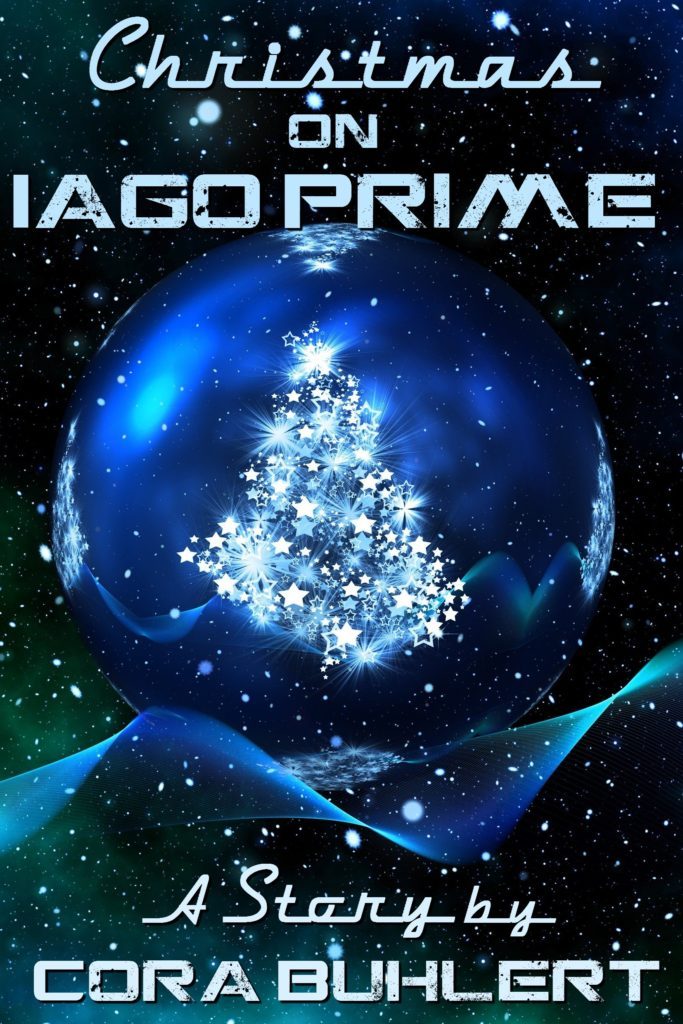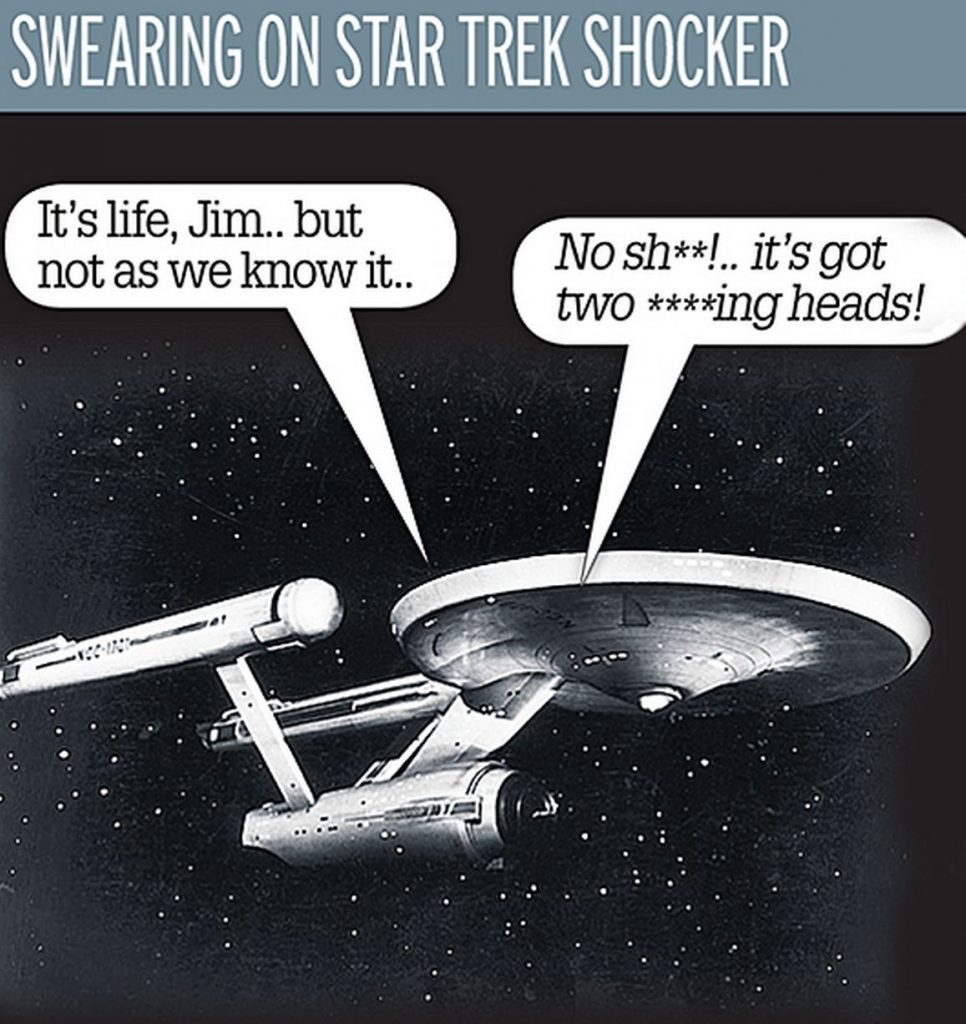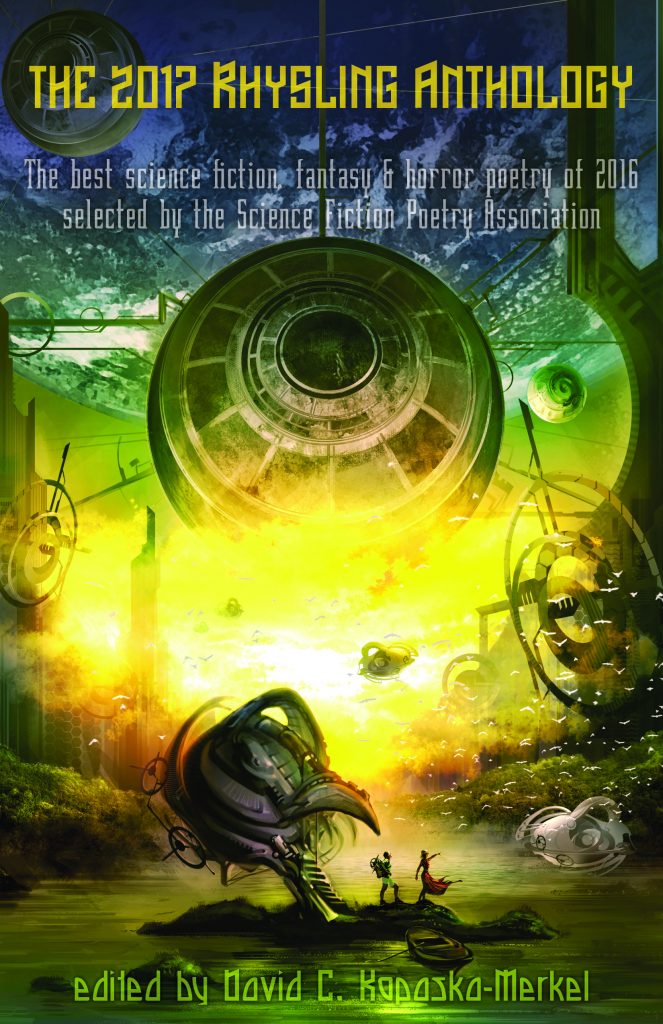(1) DON’T BE THAT AUTHOR. Brenda Clough’s list grows longer: “Ways to Trash Your Writing Career: An Intermittent Series”.
There are the really obvious ways to torch your career — rudeness to editors, for instance. And then there are the hidden trap doors. The one I am going to reveal today is truly obscure. It could be broadly described as meddling with the publication process. More specifically, you can enrage the publisher’s sales reps. Kill your book dead in one easy step! …
(2) AND DON’T BE THAT POET. F.J. Bergmann wrote and Melanie Stormm designed “How To Piss Off A Poetry Editor” for readers of SPECPO, the blog of the Science Fiction and Fantasy Poetry Association. Here’s the header —
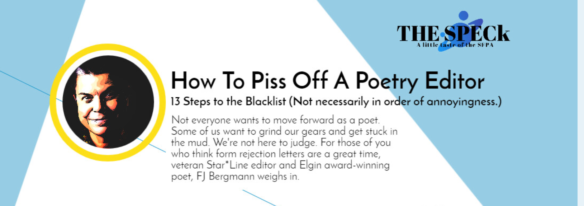
(3) KGB READINGS ONLINE. Fantastic Fiction at KGB reading series hosts Ellen Datlow and Matthew Kressel present Benjamin Rosenbaum and Mike Allen Wednesday, July 15 in a YouTube livestream event. Starts at 7 p.m. Eastern.
Benjamin Rosenbaum

Benjamin Rosenbaum’s short fiction has been nominated for the Nebula, Hugo, BSFA, Sturgeon, Locus, and World Fantasy Awards, and collected in The Ant King and Other Stories. His first novel, The Unraveling, a far-future comedy of manners and social unrest, comes out this October from Erewhon Books. His tabletop roleplaying game of Jewish historical fantasy in the shtetl, Dream Apart, was nominated for an Ennie Award. He lives near Basel, Switzerland with his family.
Mike Allen
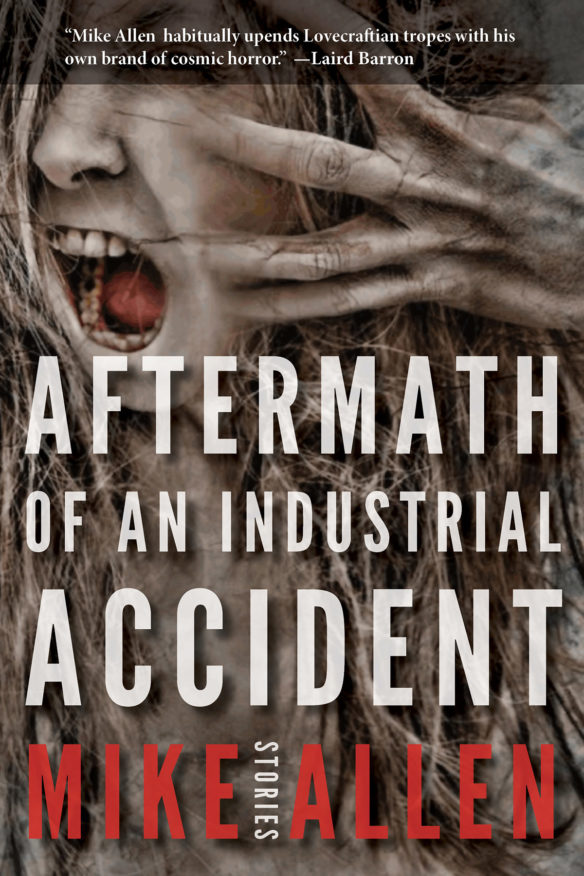
Mike Allen has twice been a finalist for the World Fantasy Award. His horror tales are gathered in the Shirley Jackson Award-nominated collection Unseaming, and in his newest book, Aftermath of an Industrial Accident. His novella The Comforter, sequel to his Nebula Award-nominated story “The Button Bin,” just appeared in the anthology A Sinister Quartet. By day, he writes the arts column for The Roanoke (Va.) Times.
Listen to podcasts of the KGB readings here.
(4) FUTURE TENSE. The June 2020 entry in the Future Tense Fiction series is “The Last of the Goggled Barskys,” by Joey Siara.
Transmitted herewith are excerpts from statements provided by members of the Barsky family regarding the incident with Hayden Barsky, age 11.
The true origins of KHAOS remain unknown….
It was published along with a response essay, “How Not to Optimize Parenthood” by Brigid Schulte, director of the Better Life Lab and author of the book Overwhelmed: Work, Love, & Play When No One Has the Time.
Most parents are well-intentioned. We try to do the right thing, hoping to spare our children at least a measure of the pain or heartache we muddled through, to smooth the rough edges of life and give them every advantage to make it in an uncertain and often cruel world.
That’s at least the hope. In practice, no one really knows how to do that. So, particularly in America, where “winning” and the self-improvement dictate to “beat yesterday” are akin to sacred commandments, we have always turned to the experts for help. What does the science say? What are the neighbors doing? What book or podcast or shiny gadget will instantly make my child’s life easier? More joyful? Miraculous? And, perhaps most importantly, better than your kid’s?…
(5) LOCKDOWN MOVIE. “Quarantine Without Ever Meeting” – Vanity Fair profiles the filmmakers. Tagline: “The actors set up lights, did their own makeup, and ran the cameras. The filmmakers advised on Zoom. Somehow…it worked.”
…While Hollywood is struggling to figure out if it’s possible to make a feature-length movie in the grip of the coronavirus pandemic, this group of independent filmmakers and actors have already done it. “The whole movie has been written, produced, packaged, shot within quarantine. Now we’re in postproduction, and I had a first cut of the whole film done on Friday,” said director and cowriter Simon. As The Untitled Horror Movie nears completion, its producers are finally announcing the secret project and seeking a distributor. It appears to be the first movie created entirely within the parameters of the lockdown.
The horror comedy is about a group of needy and desperate young stars from a once-popular TV series who learn, via video conference, that their show has just been canceled. Fearing obscurity, they decide to stay in the spotlight by making a quickie horror film—but while shooting it, they perform a ritual that accidentally invokes an actual demonic spirit. Mayhem follows. “We kind of described it going into it as Scream meets For Your Consideration,” Simon said.
(6) OFF THE COAST. In the Washington Post, Rob Wolfe says that Wizards of the Coast has banned seven Magic: The Gathering cards it says are “racist or culturally offensive” and promises a review of all 20,000 cards to find any other ones it deems questionable. “‘Racist’ and ‘culturally offensive’ images pulled from hugely popular trading card game”
The card had been around since 1994, tagged “Invoke Prejudice” by the world’s most popular trading card game. It showed figures in white robes and pointed hoods — an image that evoked the Ku Klux Klan for many people.This month, the company behind “Magic: The Gathering” permanently banned that card and six others carrying labels like “Jihad” and “Pradesh Gypsies.” Wizards of the Coast, a subsidiary of toy giant Hasbro, acknowledged the images were “racist or culturally offensive.”
“There’s no place for racism in our game, nor anywhere else,” the company said in a statement announcing its action.
With the country roiled by tensions and protests over African Americans’ deaths at the hands of police, the issues entangling Magic and its creators are unlikely to subside soon. The fantasy game of goblins, elves, spells and more boasts some 20 million players, and in pre-pandemic times, thousands flocked to elite international tournaments with hefty prizes. Players of color say they have long felt excluded in the white- and male-dominated community from the game’s top echelons, as well as employment at the company….
(7) WHAT MIGHT HAVE BEEN. “A Better World ?” seems to be a kind of text-based game letting players choose among “Uchronies,” a French term that partakes of alternate history but is more fantastic in nature. I racked up a lot of karma in a hurry, sad to say.
The dates you can change are in yellow.
The dates you just changed are in pink.
Click on one of them to change the past!
Your current karma:0
See the list of Uchronies (cancels the current game)
It didn’t go well, I’d like to start over…
(8) ANOTHER TONGUE. James Davis Nicoll says there are a bundle of “Intriguing SFF Works Awaiting English Translations” at Tor.com.
I am monolingual, which limits me to reading works in English. One of the joys of this modern, interconnected world in which we’re living is that any speculative fiction work written in another language could (in theory) be translated into English. One of my frustrations is that, generally speaking, they haven’t been. Here are five works about which I know enough to know that I’d read them if only they were translated….
(9) I’M READY FOR MY CLOSE-UP. Olav Rokne says, “Sometimes, you just want to ask the question nobody wants.” He passed along some of the hilarious responses.
(10) CARL REINER OBIT. The creator of The Dick Van Dyke Show and straight man to Mel Brooks’ “2000 Year Old Man,” died June 29 at the age of 98. The duo won a Grammy in 1998 for their The 2000 Year Old Man in the Year 2000. (The New York Times eulogy is here.)
He shared the lead in The Russians Are Coming, the Russians Are Coming and appeared in It’s a Mad, Mad, Mad, Mad World. He directed numerous movies, including several starring Steve Martin. In recent years he voiced characters in several genre animated TV shows — and Carl Reineroceros in Toy Story 4.
John King Tarpinian remembers:
He is not genre but his passing reminds me of the good old days. Back in the 80s, I was president of the largest Atari club consortium in the US. One of the members owned the Vine Street Bar & Grill. It was between Hollywood & Sunset. The first Wednesday of the month the guest jazz singer was Estelle Reiner. Ron Berinstein, club member and club owner invited me to come on Estelle’s nights to make sure the club was always full. The first time I went her husband, Carl, was also there. I learned that he always came…and that he’d have friends join them. Over the years everybody from Sid Caesar, Buck Henry, Neil Simon, Dick Van Dyke, Mel Brooks & more.
During Estelle’s break between sets Carl & whomever was also there would get up and entertain. Carl & Mel would do their 2000 Year Old Man routine but not the Ed Sullivan version but the version they’d do a parties. My ribs would be sore the next morning from laughing so hard.
Sid Caesar would come to Ray Bradbury’s plays. Imagine somebody being able to upstage Ray…who also would be laughing so hard.
(11) MEDIA BIRTHDAY.
- June 30, 1971 — Willy Wonka & the Chocolate Factory premiered. Based on Roald Dahl’s Charlie and the Chocolate Factory novel, it was directed by Mel Stuart, and produced by Stan Margulies and David L. Wolper. The screenplay was by Roald Dahl and David Seltzer. It featured Gene Wilder as Willie Wonka with a supporting cast of Jack Albertson, Peter Ostrum, Roy Kinnear, Julie Dawn Cole, Leonard Stone and Denise Nickerson. Some critics truly loved it while others loathed it. It currently holds an 87% rating among audience reviewers at Rotten Tomatoes. (CE)

(12) TODAY’S BIRTHDAYS.
[Compiled by Cat Eldridge and John Hertz.]
- Born June 30, 1905 — Nestor Paiva. Sometimes it only takes one film or series for a performer to get a Birthday write-up from me. Paiva makes it for Lucas the boat captain in The Creature from the Black Lagoon and its oft forgotten sequel Revenge of the Creature. Though that was hardly his only genre role as his first role was in the early Forties as an uncredited prison guard in Tarzan’s Desert Mystery and he’d be in many a genre film and series over the decades as Prof. Etienne Lafarge in The Mole People, as the saloon owner in (I kid you not!) Jesse James Meets Frankenstein’s Daughter, Felicity’s Father in The Spirit Is Willing, Captain Grimby in “The Great Treasure Hunt” of The Adamms Family and a Doorman in the “Our Man in Leotards” episode of Get Smart. (Died 1966.) (CE)
- Born June 30, 1920 — Sam Moskowitz. SF writer, critic, and historian. Chair of the very first World Science Fiction Convention held in NYC in 1939. He barred several Futurians from the con in what was later called the Great Exclusion Act. In the Fifties, he edited Science-Fiction Plus, a short-lived genre magazine owned by Hugo Gernsback, and would edit several dozen anthologies, and a few single-author collections, most published in the Sixties and early Seventies. His most enduring legacy was as a historian of the genre with such works as Under the Moons of Mars: A History and Anthology of “The Scientific Romance” in the Munsey Magazines, 1912–1920 and Hugo Gernsback: Father of Science Fiction. (Died 1997.) (CE)
- Born June 30, 1929 – Anie Linard, 91. Active from France, herself and with Jean Linard, in the 1950s and 1960s; fanzines Innavigable Mouth, Meuh, Vintkat, X-trap. Voted in the 1958 TAFF (Trans-Atlantic Fan Fund) campaign. She was, like many of us, a correspondent of Ned Brooks. I have not traced her more recently than June 1962. Anie, if you see this, salut! [JH]
- Born June 30, 1935 – Jon Stopa, 85. Active with Advent publishing house, half a dozen covers including In Search of Wonder, The Eighth Stage of Fandom, and The Issue at Hand. Three stories in Astounding. Program Book for Chicon III the 20th Worldcon, and cover for its Proceedings; with wife Joni, Fan Guests of Honor at Chicon V the 49th, where I think they were in some of the Madeira tastings I assembled when I found four or five D’Oliveiras in the hotel bar. The Stopas were (Joni has left the stage) also great costumers, both as entrants and judges; there’s a YouTube of their work here. [JH]
- Born June 30, 1959 — Vincent D’Onofrio, 61. Kingpin in that not terribly good or bad Daredevil film, Edgar the Bug in the only truly great Men in Black film and Vic Hoskins in Jurassic World. He also was Jason Whitney / Jerry Ashton in The Thirteenth Floor, loosely based upon Simulacron-3, a early Sixties novel by Daniel F. Galouye. (CE)
- Born June 30, 1961 — Diane Purkiss, 59. I’ve not read her Corydon Trilogy she wrote with Michael Dowling, her son, but I can say that At the Bottom of the Garden: A Dark History of Fairies, Hobgoblins, Nymphs, and Other Troublesome Things is as splendid as the title suggests it is. She’s also written Fairies and Fairy Stories: A History. (CE)
- Born June 30, 1961 – Nigel Rowe, 59. Published Timeless Sands history of New Zealand fandom, then moved to Chicago. Here is a 1994 photo of him with Russell Chauvenet (who coined the word fanzine) at Corflu 11 in Virginia. A 2019 photo of him is on p. 47 of Random Jottings 20 (PDF), the Proceedings of Corflu 36 in Maryland; he’s also on the cover (back right; you may be able to make out his badge “Nigel”). Very helpful relaying paper fanzines across the seas. [JH]
- Born June 30, 1961 – carl juarez, 59. No capital letters in his name. Co-edited the fanzine Apparatchik with Andy Hooper (from Apak 62), later Chunga with Hooper and Randy Byers. Here is his cover for Chunga 8. He’s on the right of the cover for Chunga 17 (PDF). Chunga credited cj as designer, the results being indeed fine. He, Byers, and Hooper were such a tripod that with Byers’ death, Chunga tottered; should it fall, may cj find his feet. [JH]
- Born June 30, 1963 — Rupert S. Graves, 57. Here because he played Inspector G. Lestrade on that Sherlock series. He also appeared on Doctor Who as Riddell in the Eleventh Doctor story, “Dinosaurs on a Spaceship”. He had one-offs in The Nightmare Worlds of H. G. Wells: The Moth, Twelve Monkeys, Krypton and Return of the Saint. (CE)
- Born June 30, 1966 – Penny Watson, 54. Degrees in plant taxonomy, horticultural science, biology, and floral design; “there is nothing better than getting up in the morning, heading out to your garden and picking fresh basil, cherry tomatoes, cukes, and arugula greens for breakfast.” Obsessed with dachshunds. Has trained dolphins, coached field hockey and lacrosse. Nat’l Excellence in Romance Fiction Award. Eight novels, five of them and a novella for us. [JH]
- Born June 30, 1966 — Peter Outerbridge, 54. Dr. David Sandström in what I think is the underrated ReGenesis series as well as being Henrik “Hank” Johanssen in Orphan Black anda recurring role on Millennium as Special Agent Barry Baldwin. He’s currently in two series, The Umbrella Academy with a recurring role as The Conductor, and as Calix Niklosin in V-Wars, yet another Netflix SF series. (CE)
- Born June 30, 1972 — Molly Parker, 48. Maureen Robinson on the current Lost in Space series. One-offs in Nightmare Cafe, The Outer Limits, The Sentinel, Highlander: The Series, Poltergeist: The Legacy, Human Target and she appeared in The Wicker Man asSister Rose / Sister Thorn. (CE)
- Born June 30, 1974 – Juli Zeh, 46. A dozen novels so far, three for us. Deutscher Bücherpreis, Solothurner Literaturpreis; doctorate in international law, honorary judge at the Brandenburg constitutional court. About Schilf (“reed”, name of a character – likewise an English surname), translated into English as Dark Matter (London) and In Free Fall (New York), when a Boston Globe interviewer asked “Are you asking the reader to reconsider the nature of reality?” JZ answered “Yes, I want to take the reader on an intellectual journey”; to “Can a novel of ideas be written today, without irony?” JZ answered “As long as mankind doesn’t lose its curiosity to think about the miracles of being.” [JH]
(13) COMICS SECTION.
- Non Sequitur shows us the first science fiction writer — and true Hard SF, even as to the medium it’s composed on.
- Today’s Bizarro is not an SF comic, but one with good advice for the privileged rich kid starting a literary career.
(14) DOOMSCROLLING. I learned a useful new word from John Scalzi’s post “Check In, 6/30/20”.
…With that said, there’s another aspect of it, too, which I think I’ve been minimizing: it’s not just time on social media, it’s engagement when I am on it, and how social media is making me feel when I use it. The term “doomscrolling” refers to how people basically suck down fountains of bad news on their social media thanks to friends (and others) posting things they’re outraged about. It’s gotten to the point for me where, particularly on Twitter, it feels like it’s almost all doomscrolling, all the time, whether I want it to be or not.
(15) STANDING UP. David Gerrold’s unlocked Patreon post “I Stand With The Science Fiction Writers of America” may be a reaction to yesterday’s item about the publisher of Cirsova, and certainly gives emphatic support to SFWA’s recent statement about BLM.
…The BLM movement are not terrorists. They are not thugs. They are peaceful protesters, marching against industrial discrimination and system-entrenched bigotry. The demonstrators have actually caught looters and rioters and delivered them to the police.
It doesn’t matter how much the limousine-liberals preach equality if there are no serious efforts to redress the grievances of the disadvantaged.
If we truly are all in this together, then it behooves all of us to reach out to each other and create partnerships and opportunities. This isn’t preferential treatment. It’s a necessary bit of repair work to a damaged genre.
If we don’t talk about it, if we don’t take steps, if we don’t address it, then we are guilty of complicity. If the racism of the past was a product of its time, then let our attempts to redress the situation be a product of our time.
(16) BLOCKED OUT. Missed this in March: “Lego embraces the dark side with three helmet building kits”. And it’s not like I didn’t have time on my hands.
… These sets are up for preorder now from Lego at $59.99 and are set to ship on April 19.
- Stormtrooper Buildable Model Helmet ($59.99; lego.com)
- Boba Fett Buildable Model Helmet ($59.99; lego.com)
- TIE Fighter Pilot Buildable Model Helmet ($59.99; lego.com)
With the Stormtrooper, you’re getting a 647-piece helmet-building set, complete with the blacked-out visor, two nodes on the bottom for speaking and stickers to complete the look. Similarly, the Boba Fett helmet will let you pay homage to the original Mandalorian. This set is 21 centimeters tall (a little over 8 inches) and has 625 pieces. You’ll be constructing each detail of the helmet, including the fold-down viewfinder that lets Boba easily track down his targets. (He is a bounty hunter, after all.)
(17) HAKUNA ERRATA. [Item by Daniel Dern.] In Pixel Scroll 5/27/20 Johnny Mnemonic B. Goode I’d said —
This in turn reminded me of one of my favorite songs by Chris Smither, “Henry David Thoreau” riffing on (same tune) Berry’s song. Oddly, even incomprehensibly, I find NO mention of it anywhere via DuckDuckGo nor Google, even though I’ve heard Smither sing it numerous times. (I also checked his discography.
It turns out that, while I have heard Chris Smither sing this song, he wasn’t the author. That was Paul Geremia, one of Boston/Cambridge’s wonderful acoustic blues musicians.
The song is on his Self Portrait In Blues album. (And on my ~2,800-song Spotify playlist, which is how, when it came around again this morning on the guitar, as it were, I realized my mistake.)
Here’s a so-so performance:
The song (and much of the album) is on Spotify, Amazon Music, Apple, and elsewhere. Apple’s got a reasonable sample snippet.
(18) THE STAR VANISHES. The BBC says Alfred Hitchcock isn’t involved in “Mystery over monster star’s vanishing act”.
Astronomers have been baffled by the disappearance of a massive star they had been observing.
They now wonder whether the distant object collapsed to form a black hole without exploding in a supernova.
If correct, it would be the first example of such a huge stellar object coming to the end of its life in this manner.
But there is another possibility, the study in Monthly Notices of the Royal Astronomical Society reports.
The object’s brightness might have dipped because it is partially obscured by dust.
It is located some 75 million light-years away in the Kinman Dwarf galaxy, in the constellation of Aquarius.
The giant star belongs – or belonged – to a type known as a luminous blue variable; it is some 2.5 million times brighter than the Sun.
Stars of this kind are unstable, showing occasional dramatic shifts in their spectra – the amount of light emitted at different wavelengths – and brightness.
(19) YOU WILL BELIEVE A…EH, NO YOU WON’T. NPR explains “How Snakes Fly (Hint: It’s Not On A Plane)”
Flying snakes like Chrysopelea paradisi, the paradise tree snake, normally live in the trees of South and Southeast Asia. There, they cruise along tree branches and, sometimes, to get to the ground or another tree, they’ll launch themselves into the air and glide down at an angle.
They undulate their serpentine bodies as they glide through the air, and it turns out that these special movements are what let these limbless creatures make such remarkable flights.
That’s according to some new research in the journal Nature Physics that involved putting motion-capture tags on seven snakes and then filming them with high-speed cameras as the snakes flew across a giant four-story-high theater.
How far they can go really depends on how high up they are when they jump, says Jake Socha at Virginia Tech, who has studied these snakes for almost a quarter-century. He recalls that one time he watched a snake start from about 30 feet up and then land nearly 70 feet away. “It was really a spectacular glide,” Socha recalls.
Part of the way the snakes do this is by flattening out their bodies, he says. But the snakes’ bodies also make wavelike movements. “The snake looks like it’s swimming in the air,” he says. “And when it’s swimming, it’s undulating.”
(20) BLOCKBUSTED. “With Big Summer Films Delayed, AMC Theatres Puts Off U.S. Reopening”.
The nation’s largest movie theater chain is delaying its U.S. reopening until the end of July because film companies have postponed release dates of two anticipated blockbusters.
AMC Theatres announced that a first round of approximately 450 locations will resume operations two weeks later than initially planned, to coincide with the updated August release dates of Warner Brothers’ Tenet and Disney’s Mulan.
“Our theatre general managers across the U.S. started working full time again today and are back in their theatres gearing up to get their buildings fully ready just a few weeks from now for moviegoers,” CEO Adam Aron said in a June 29 statement. “That happy day, when we can welcome guests back into most of our U.S. theatres, will be Thursday, July 30.”
The company said it expects its more than 600 U.S. theaters to be “essentially to full operation” by early August.
AMC Theatres made headlines earlier this month when it announced patrons will be required to wear masks, reversing course on a controversial reopening plan that had only encouraged them to do so.
(21) ALL THE SMART KIDS ARE DOING IT. “Famous New York Public Library Lions Mask Up To Set An Example”.
For the first time, the familiar marble faces outside the New York Public Library will be obscured by masks.
Patience and Fortitude, the iconic lion sculptures guarding the 42nd Street library, are wearing face coverings to remind New Yorkers to stay safe and stop the spread of COVID-19.
The masks arrived on June 29, and measure three feet wide by two feet tall, according to a library statement.
New York Public Library President Anthony Marx emphasized the symbolism of the aptly named lions, and said New Yorkers are similarly strong and resilient.
(22) NEVERENDING SENDUP. The Screen Junkies continue their look at oldies with an “Honest Trailer” for The Neverending Story, where they show that gloomy Germans created “a world of neverending misery.” They discovered that star Noah Hathaway subsequently played Harry Potter Jr. in Troll (1986) with Michael Moriarty playing Harry Potter Sr.
[Thanks to John King Tarpinian, John Hertz, JJ, Joey Eschrich, Rich Horton, Mike Kennedy, Martin Morse Wooster, Michael Toman, Chip Hitchcock, Cat Eldridge, Daniel Dern, Darrah Chavey, Olav Rokne, and Andrew Porter for some of these stories. Title credit goes to wandering minstrel of the day Cliff.]











